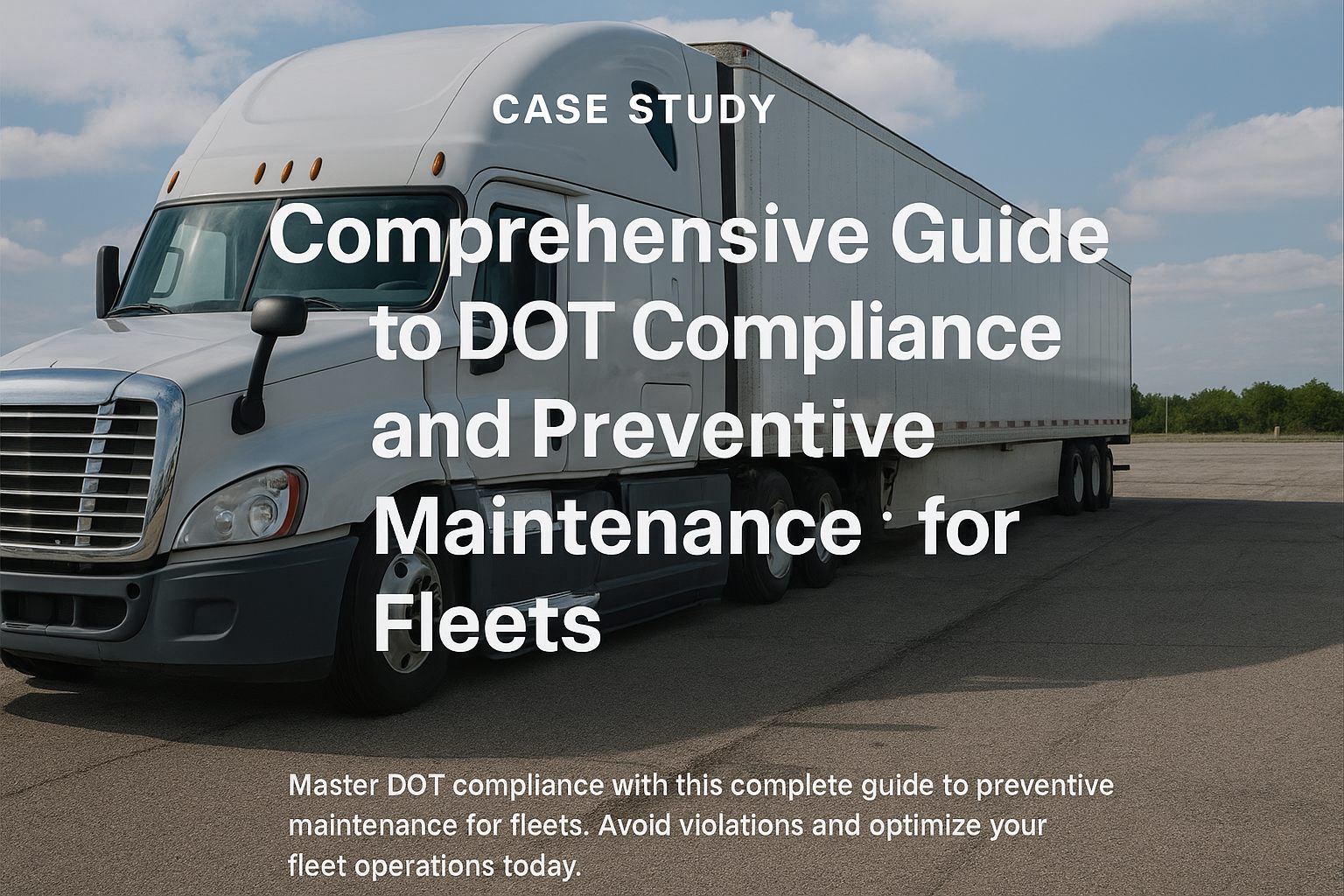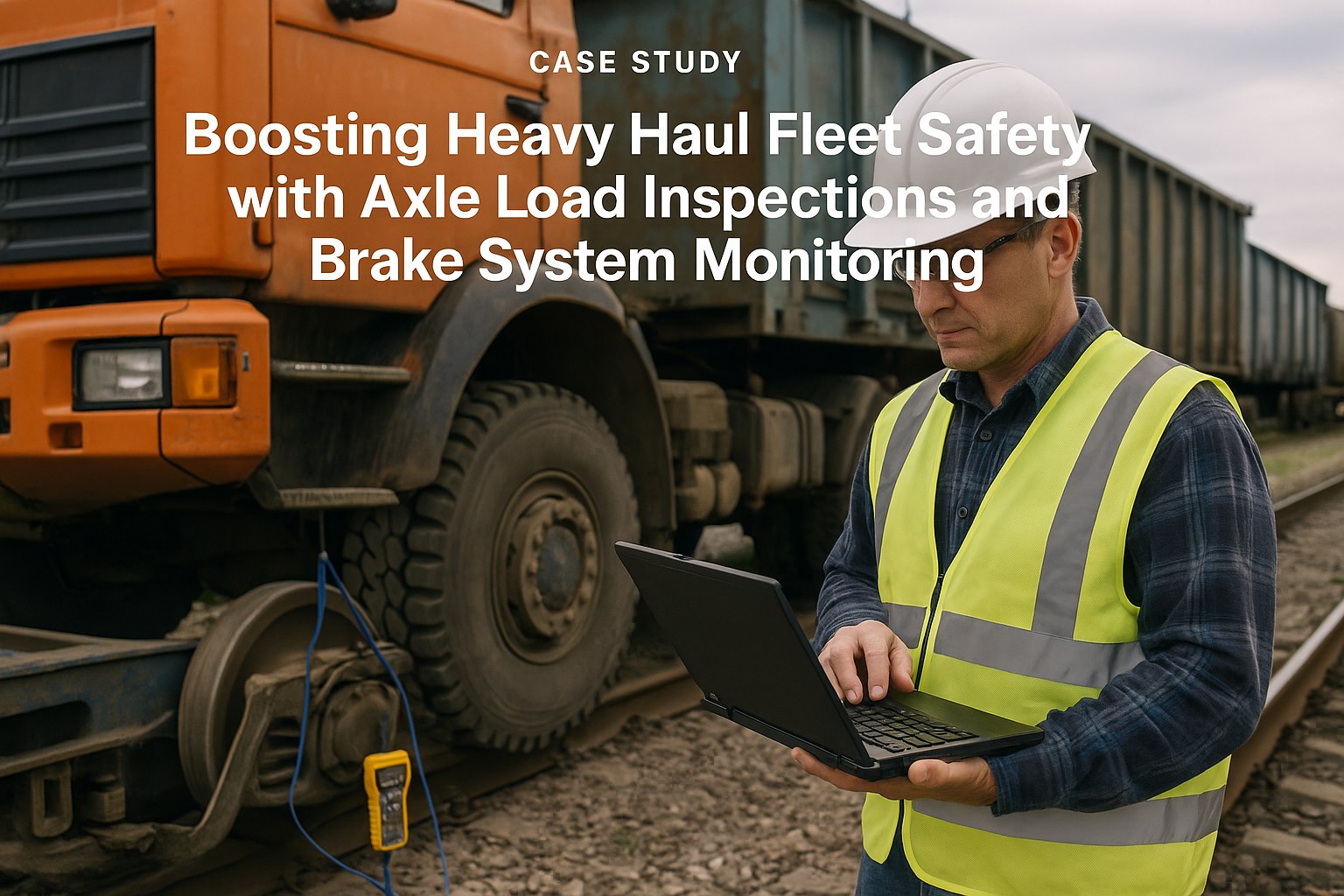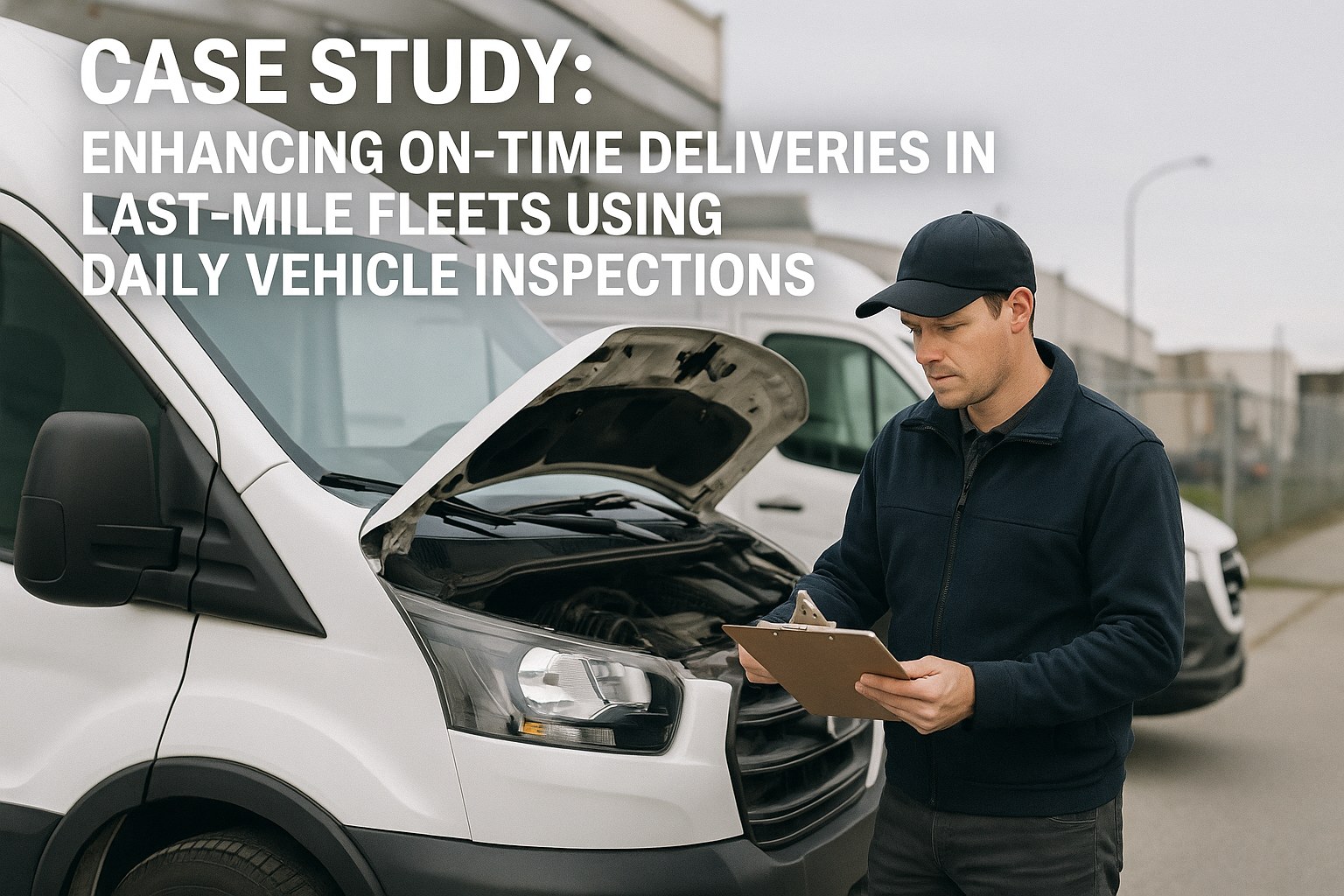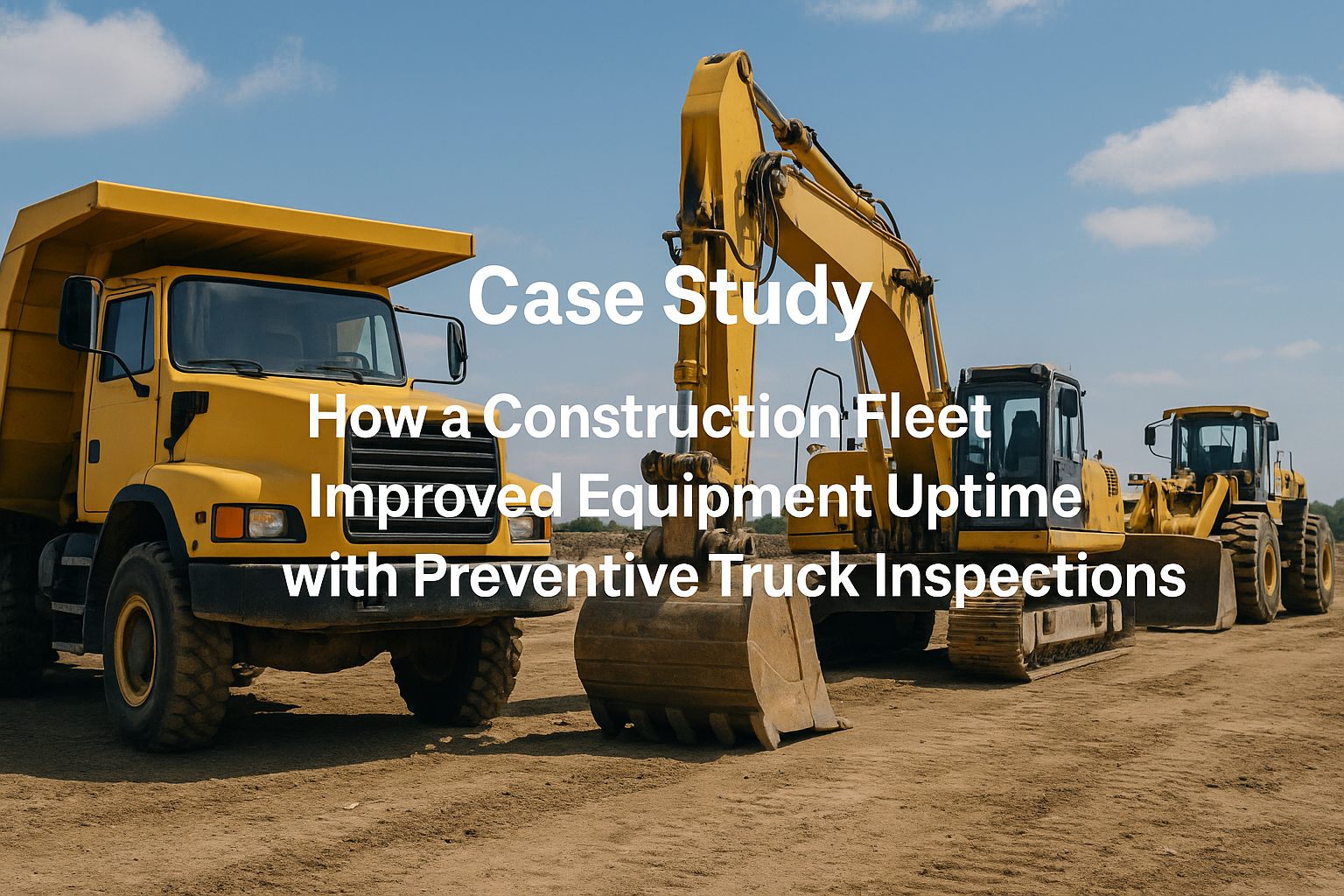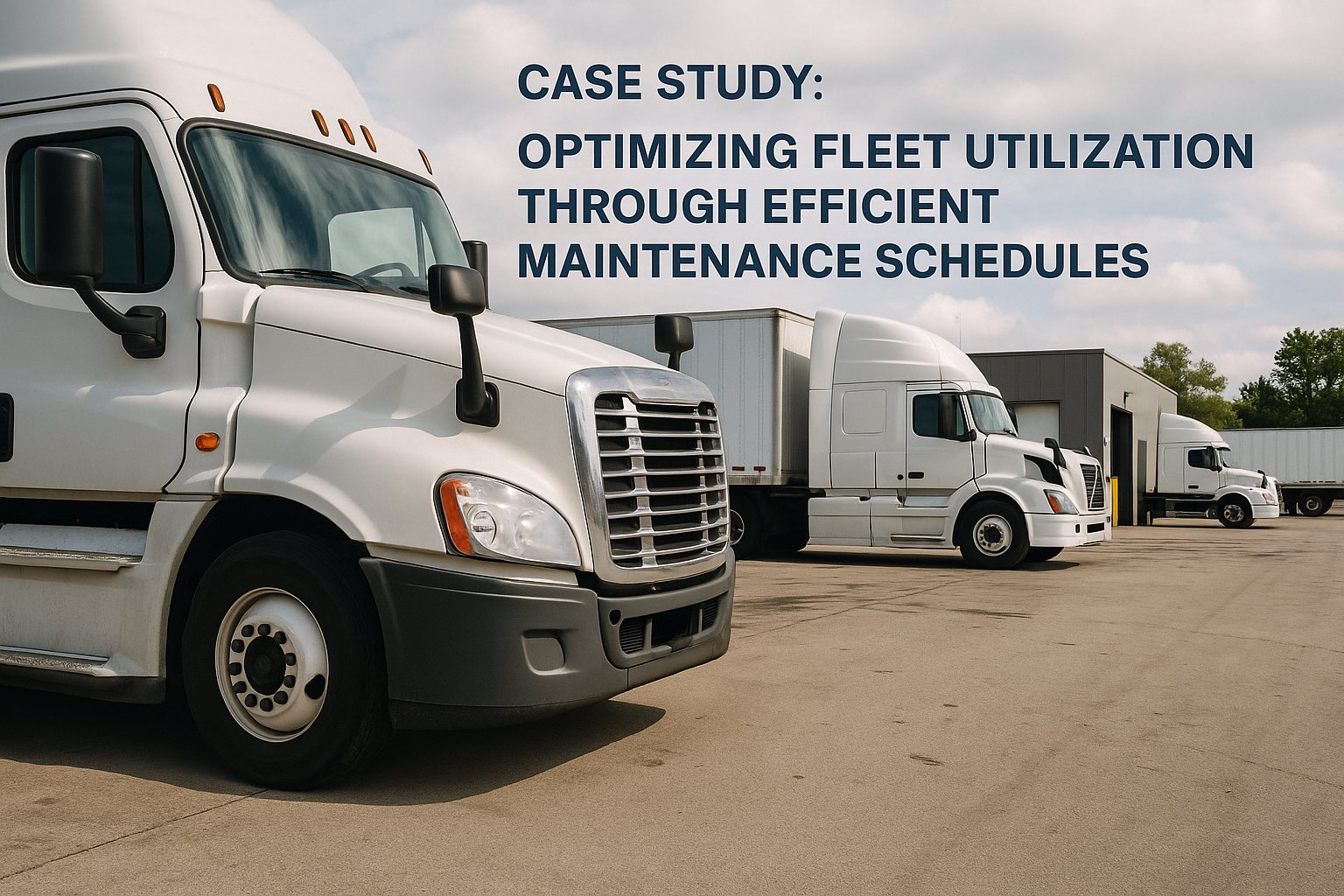In 2024, the Federal Motor Carrier Safety Administration (FMCSA) issued over 2.3 million violations, with maintenance-related infractions accounting for 42% of all citations. For US manufacturing companies operating fleets , DOT compliance is not just about avoiding fines—it's about building a sustainable competitive advantage. This comprehensive guide reveals how industry leaders are transforming DOT compliance from a regulatory burden into a strategic asset through innovative preventive maintenance programs.
The intersection of regulatory compliance and operational efficiency presents unique challenges for fleet managers. Much like healthcare facilities managing critical hospital equipment through sophisticated CMMS platforms, modern fleet operations require an equally robust approach to asset tracking , maintenance. The stakes are remarkably similar: both industries cannot afford downtime, both face stringent regulatory oversight, and both benefit tremendously from predictive maintenance strategies that maximize uptime.
Consider this: A single DOT violation can cost between $1,000 to $15,000, but the hidden costs—including increased insurance premiums, delivery delays, and damaged reputation—often exceed $50,000 per incident. Yet, companies implementing comprehensive preventive maintenance programs report 89% fewer violations while simultaneously reducing overall maintenance costs by 35%. This guide explores how three manufacturing giants achieved these remarkable results.
Understanding DOT Compliance: The Foundation of Fleet Excellence
Department of Transportation compliance encompasses a complex web of regulations designed to ensure commercial vehicle safety. For manufacturing professionals managing fleets, understanding these requirements is the first step toward building a maintenance program that exceeds standards while optimizing operational efficiency.
Critical DOT Compliance Areas:
- Vehicle inspection requirements (pre-trip, post-trip, and annual)
- Driver qualification and hours of service regulations
- Maintenance record keeping and documentation standards
- Hazardous materials transportation requirements
- Electronic Logging Device (ELD) compliance
- Drug and alcohol testing programs
The parallels between fleet maintenance and healthcare maintenance systems are striking. Just as hospitals rely on CMMS to ensure critical equipment availability, fleet managers must maintain their vehicles with equal precision. Both industries face life-safety implications, regulatory scrutiny, and the imperative to maximize asset uptime while controlling costs.
Case Study 1: MidWest Manufacturing's Transformation
MidWest Manufacturing, operating 200 trucks across seven states, faced a compliance crisis in 2023. With violation rates climbing and insurance premiums skyrocketing, they implemented a revolutionary preventive maintenance program that would become the industry benchmark.
The Challenge
Before transformation, MidWest Manufacturing struggled with reactive maintenance practices that resulted in frequent breakdowns and compliance failures. Their challenges included:
- Average of 4.7 roadside inspections failures per month
- $875,000 in DOT fines over 18 months
- Insurance premiums increased by 65% in two years
- Customer delivery delays affecting 12% of shipments
- No centralized maintenance tracking system
The Solution
MidWest implemented a three-phase approach that integrated technology, training, and process optimization. Their solution borrowed best practices from healthcare maintenance systems, adapting CMMS principles to fleet management.
Phase 1: Technology Implementation
The company deployed a cloud-based fleet management system that provided real-time visibility into vehicle health, maintenance schedules, and compliance status. This platform integrated with their existing ERP system, creating a single source of truth for all fleet data.
Phase 2: Preventive Maintenance Protocols
MidWest developed a comprehensive preventive maintenance schedule based on manufacturer recommendations, DOT requirements, and historical failure data. Every vehicle received scheduled maintenance based on mileage, engine hours, and calendar intervals.
Phase 3: Driver Empowerment
Recognizing that drivers are the first line of defense, the company invested heavily in training programs. Drivers learned to conduct thorough pre-trip inspections using mobile apps that automatically logged findings and triggered maintenance workflows when issues were identified.
Results and ROI
Within 12 months of implementation, MidWest Manufacturing achieved remarkable results that exceeded all projections:
- Compliance Improvements: DOT violation rate dropped from 23% to 1.6%
- Cost Reductions: Total maintenance costs decreased by 42% through preventive measures
- Operational Excellence: On-time delivery rate improved from 88% to 97.5%
- Safety Enhancements: Zero preventable accidents for 18 consecutive months
- Financial Impact: ROI of 287% within the first year
Case Study 2: Precision Parts Logistics' Digital Revolution
Precision Parts Logistics, a tier-one automotive supplier with 125 vehicles, faced unique challenges delivering just-in-time components to assembly plants. Their story demonstrates how digital transformation can revolutionize fleet compliance and maintenance.
The Innovation Approach
Precision Parts took a data-driven approach to compliance, implementing IoT sensors and predictive analytics to anticipate maintenance needs before they became compliance issues. Their system monitored everything from tire pressure to engine diagnostics in real-time, creating a predictive maintenance ecosystem that prevented violations before they occurred.
Key innovations included automated inspection scheduling that ensured no vehicle exceeded DOT intervals, predictive component replacement based on usage patterns and manufacturer data, and mobile maintenance teams that performed repairs at customer sites to minimize downtime. Their integration with supplier systems for automatic parts ordering reduced procurement time by 73%.
Building Your Preventive Maintenance Program
Creating a world-class preventive maintenance program requires more than technology—it demands a systematic approach that aligns people, processes, and tools. Based on insights from industry leaders, here's a comprehensive framework for building your program.
Step 1: Assessment and Planning
Begin with a thorough assessment of your current state. This mirrors the approach healthcare facilities take when implementing CMMS for hospital equipment management. Document your existing maintenance practices, compliance history, and operational challenges.
Assessment Checklist:
- Analyze past 24 months of DOT violations and identify patterns
- Calculate true cost of reactive maintenance including downtime
- Evaluate current technology stack and integration capabilities
- Assess team skills and training needs
- Review insurance claims and safety incidents
- Benchmark against industry standards
Step 2: Technology Selection
Choose a fleet management system that provides comprehensive asset tracking capabilities similar to healthcare CMMS platforms. Essential features include real-time vehicle health monitoring, automated maintenance scheduling, mobile inspection capabilities, and compliance documentation management. The system should offer predictive analytics for failure prevention and integrate with existing business systems.
Step 3: Process Development
Develop standardized processes that ensure consistency across your fleet operations. This includes creating detailed inspection checklists aligned with DOT requirements, establishing maintenance intervals based on data rather than assumptions, and implementing escalation procedures for critical issues. Document everything—in the world of DOT compliance, if it's not documented, it didn't happen.
Step 4: Training and Culture
The most sophisticated systems fail without proper adoption. Invest in comprehensive training that covers regulatory requirements, technology usage, and the business case for compliance. Create a culture where preventive maintenance is valued over heroic repairs.
Advanced Strategies for Compliance Excellence
Leading fleets are pushing beyond basic compliance to achieve operational excellence. These advanced strategies separate industry leaders from those merely meeting minimum requirements.
Predictive Analytics and AI
Modern fleet operations leverage artificial intelligence to predict component failures before they impact operations. By analyzing patterns across thousands of vehicles, AI systems can identify subtle indicators that human inspectors might miss. This approach, similar to how advanced hospital equipment monitoring prevents critical failures, enables fleets to replace components at the optimal time—not too early (wasting money) and not too late (risking violations).
Blockchain for Compliance Documentation
Forward-thinking companies are implementing blockchain technology to create immutable maintenance records. This innovation provides indisputable proof of compliance activities, simplifies audits, and can even reduce insurance premiums by demonstrating commitment to safety.
Integration with Supply Chain Systems
The most sophisticated programs integrate fleet maintenance with broader supply chain systems. This enables automatic parts ordering based on predictive maintenance schedules, route optimization considering vehicle health status, and customer communication about potential delays due to required maintenance. The result is a seamless operation where compliance enhances rather than hinders business objectives.
ROI Analysis: The Business Case for Prevention
The financial benefits of comprehensive preventive maintenance extend far beyond avoided fines. A detailed analysis of programs across 50 manufacturing fleets reveals compelling returns on investment.
Average Annual Savings per 100 Vehicles:
- Avoided DOT Fines: $487,000
- Reduced Insurance Premiums: $356,000
- Decreased Maintenance Costs: $892,000
- Improved Fuel Efficiency: $234,000
- Reduced Downtime (Opportunity Cost): $1,450,000
- Total Annual Benefit: $3,419,000
Against an average implementation cost of $650,000 and annual operating expenses of $180,000, the ROI exceeds 400% in the first year alone. These figures don't include intangible benefits like improved customer satisfaction, enhanced driver retention, and reduced legal liability.
Common Pitfalls and How to Avoid Them
Even well-intentioned programs can fail. Understanding common pitfalls helps ensure your preventive maintenance initiative delivers promised results.
Top 5 Implementation Failures:
- Underestimating Cultural Change: Technology alone won't transform operations. Invest equally in change management and training.
- Incomplete Data Migration: Ensure all historical maintenance data transfers to your new system. Missing data creates compliance gaps.
- Ignoring Driver Feedback: Drivers often identify issues first. Create channels for their input and act on their observations.
- Focusing Only on Major Components: Small items like lights and reflectors cause many violations. Address everything.
- Inconsistent Documentation: Standardize all record-keeping practices. Inconsistency invites scrutiny during audits.
Future-Proofing Your Fleet Compliance
The regulatory landscape continues evolving, with new requirements for environmental compliance, electronic documentation, and safety technology. Successful fleets build programs flexible enough to adapt to changing requirements while maintaining operational efficiency.
Emerging trends shaping the future of fleet compliance include autonomous vehicle integration requiring new maintenance protocols, environmental regulations demanding alternative fuel expertise, and advanced telematics providing unprecedented vehicle insights. Real-time compliance scoring enables immediate corrective action, while augmented reality is revolutionizing technician training and remote diagnostics.
Your Roadmap to Compliance Excellence
Achieving DOT compliance while optimizing maintenance costs isn't just possible—it's profitable. The case studies and strategies outlined in this guide provide a proven roadmap for transformation. Success requires commitment, investment, and a willingness to challenge traditional approaches.
The parallels between fleet maintenance and healthcare equipment management offer valuable lessons. Both industries have discovered that proactive asset tracking and preventive maintenance deliver superior outcomes compared to reactive approaches. By applying these proven principles to your fleet operations, you can achieve the same remarkable results: improved safety, reduced costs, and enhanced operational efficiency.
The journey to compliance excellence begins with a single step: assessing your current state and committing to improvement. With the right strategy, technology, and team engagement, your fleet can join the ranks of industry leaders who've transformed DOT compliance from a burden into a competitive advantage.
Ready to Transform Your Fleet Operations?
Join leading US manufacturing companies revolutionizing their approach to DOT compliance and preventive maintenance. Discover how our comprehensive solutions can help you achieve similar results while maximizing uptime and minimizing costs.
Getting Started Book a Demo